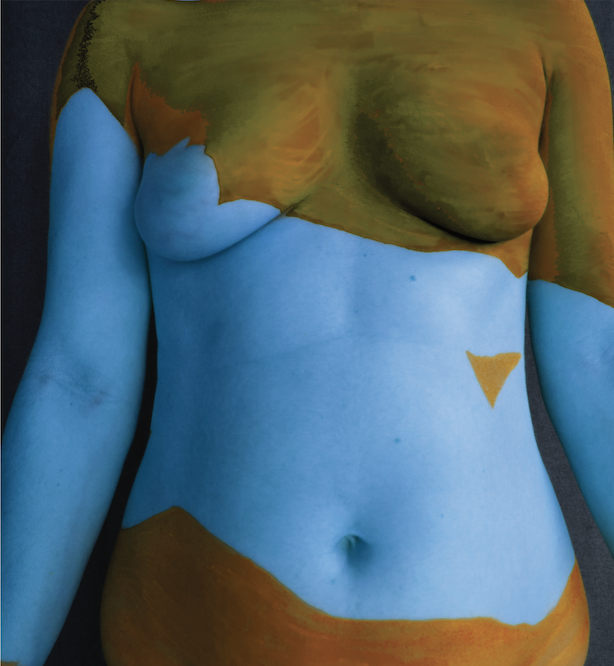Skin to Kin
"Skin to Kin" is a photographic imprint of the artist’s bare chest, showing the mark left by skin-to-skin contact while nursing her toddler. The image captures the first site of human connection—touch—as foundational to emotional and social development. In contrast to capitalist ideals of early independence, the work highlights how deep dependency in infancy fosters true autonomy later in life. By making visible this intimate form of care, "Skin to Kin" reframes maternal closeness as essential labour, not weakness. It calls for recognition of embodied caregiving as the root of collective well-being and a more connected society.
Skin to skin contact between parent and child creates a profound connection that extends far beyond individual bonding. This intimate touch releases oxytocin, establishing neural pathways that shape a child's capacity for healthy relationships throughout life. While nurturing the child's development, these moments equally benefit parents by reducing stress and fostering emotional attunement.
This creates a ripple effects that extends to society itself. Children who experience this foundational touch develop stronger empathy, emotional regulation, and secure attachment patterns. These qualities create adults more capable of forming stable relationships and communities. Our collective resilience begins with these simple moments of physical connection, building the kinship ties that ultimately strengthen the social fabric.





